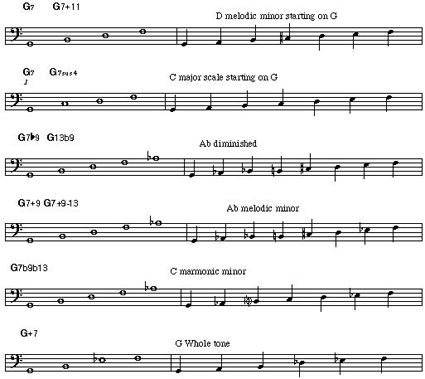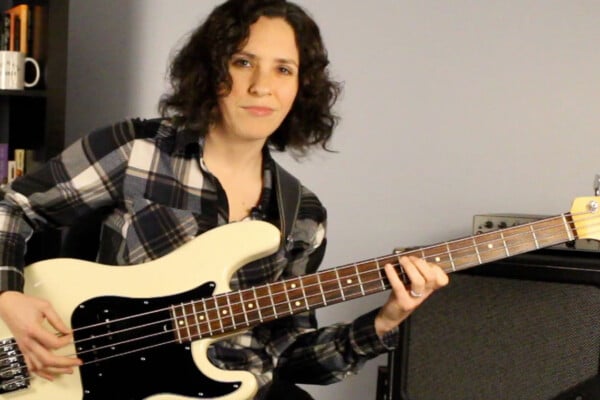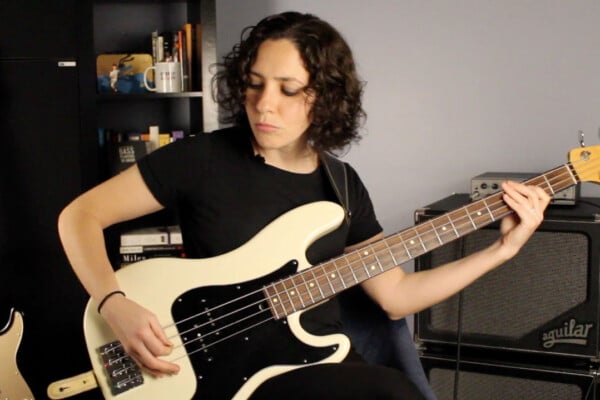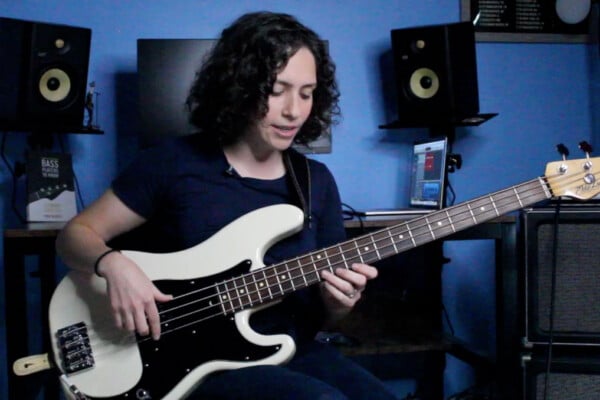Melodic Construction: Extensions on Dominant Chords, Part 1
We know that there are many flavors of dominant chord. Various upper extensions of the chord—or alterations of the fifth—suggest different harmonic environments, each with its own chordal scale and triad polychords expressing the arrays of extensions. We’ll explore the most commonly used of these chords and extensions in a future column—but first…
What do these extensions mean for the bassist? This is a question frequently asked by students!
In the “anchor, pivot and lead-in” approach to the creation of melodic fundamental bass lines, these extensions are very useful. These extension notes are important to the color of the chord; they carry equal (if not greater) importance to the sonority to the other chord tones, and often make good pivots!
Here’s a big if to the previous statement: extensions make good pivots IF they’re not the melody note! Bassists should avoid doubling the melody note – unless it’s a root on the first beat, or unless there is an intentional unison, doubling the lead line for an effect.
Here’s a series of examples of extensions (rather than 5ths) used as pivots (in the context of an even-8th or bossa feel):

For reference purposes, here is a chart showing some of the different scales that are generated by different occurrences of the dominant and its extensions:

Next week we’ll talk about various approaches to incorporating these extensions into our thinking, and some thoughts on the importance of these scales and how to use them.



